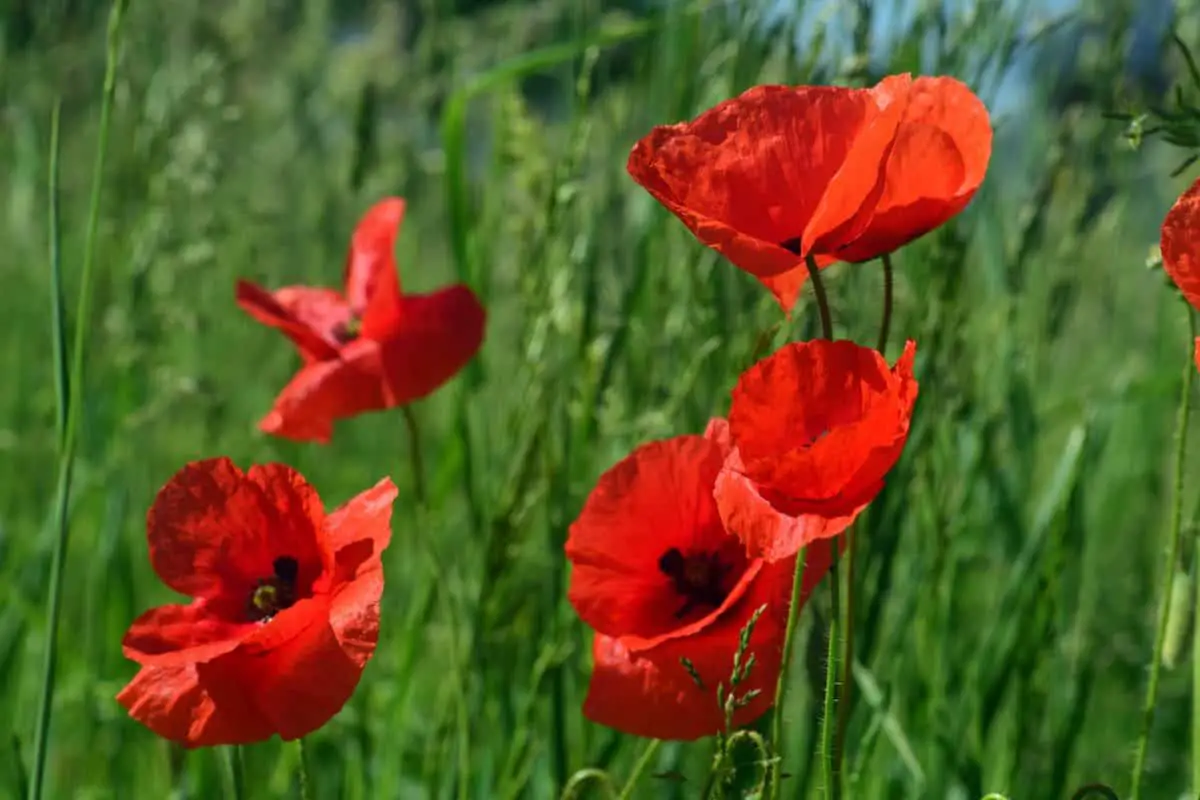
The Poppy They are herbs that, although the scientific name may confuse us, in reality I am convinced that everyone, who else who less, has ever seen their flowers. And it is that poppies, which is how they are popularly known, in addition to being precious are very delicate: their petals fall immediately as soon as the wind blows a little strong.
These characteristics make them one of the easiest plants to identify, but they may be more so if we take into account that their germination rate is high. In fact, the normal thing is that if for example you sow ten seeds, all or most germinate, so if you want to enjoy them in your garden or patio, you only have to get some. Next you will discover how to take care of them.
Origin and characteristics of the Papaver
Papaver or poppies are annual (live one year), biennial (two years) or vivacious (more than 3 years) herbs belonging to the family papaveraceae. They are distributed throughout Europe, Asia and North America, and They are characterized by reaching a height of 20 centimeters to almost 2 meters. The leaves are more or less divided, the lower ones being petiolated and the upper ones, if they are, are sessile. (that is, they do not have a petiole which joins them to the stem).
They bloom in spring normally. The flowers are solitary and terminal, and are composed of 2 or 3 sepals, in addition to 4 to 6 petals of red, orange, yellow, white or purple color. The fruits are pods to subglobose capsules that contain numerous reniform, striated or reticulated seeds with a size of 0,5 to 1,5mm of various colors.
Main species or types
The best known are the following:
papaver argemone

Image – Flickr / Salome Bielsa
The papaver argemoneknown as male poppy, is an annual plant native to Europe that reaches a height of 40 centimeters. Unlike other poppies, its fruit is up to 2 centimeters long, has ribs, is oblong-cylindrical in shape, and has erect and hard hairs. It blooms in spring and summer, producing red flowers.
doubt appeared

Image – Wikimedia Commons / Aiwok
The doubt appearedknown as oblong poppy, is an herb native to Europe, western and central Asia, North Africa, and Macaronesia. In Spain it is common in the Iberian Peninsula and in the Balearic Islands. It has the same characteristics as the common poppy (Papaver rhoeas), but the color of its flowers is a paler red. It blooms in spring and summer.
Poppy hybrid

Image – Flickr / Ferran Turmo Gort
The Poppy hybridknown as sad poppy, is an annual herb native to Europe, North Africa, and Asia. In Spain it is common in the Iberian Peninsula, especially on the edges of roads and in abandoned fields. Its flowers are reddish or pale crimsonand sprout in spring-summer.
Papaver rhoeas

The Papaver rhoeasknown as the common poppy or wild poppy, is an annual herb found in Eurasia and North Africa. It can reach a height of more than 50 centimetersand its flowers are intense scarlet, flared and almost spherical. It blooms in spring.
Uses
It is interesting as an ornamental plant, but without a doubt its most widespread use is culinary. The fresh green leaves can be picked before flowering and cooked like spinach. On the other hand, the seeds are good as a condiment, and they are also used in pastries.
Papaver somniferum

The Papaver somniferumknown as poppy or royal poppy, is an annual herb native to the southern and eastern Mediterranean. It can reach a height of between 15 and 1,5 meters. The flowers are pedunculated, solitary and terminal, white, pink, purplish or red. It blooms in spring-summer.
Uses
Semi-ripe fruits, as well as their dried sap, contain alkaloids, so they are used to make opium and its derivatives illegally. In modern medicine these same alkaloids are used as pain relievers.
The seeds are used to garnish buns, loaves of bread, and the like.and are also added to bird feed. The oil obtained from these is used to make soaps and as fuel.
How do the Papaver take care of themselves?
If you want to have some Papaver in your garden or patio, we recommend you provide the following care:
Location
They are plants that must be abroad, in full Salt.
Earth
- Flower pot: fill with universal growing substrate for plants.
- the garden: they grow in all types of soils, as long as they have good drainage.
Irrigation
Irrigation must be moderate. During the summer it may be necessary to water 3-4 times a week, on the other hand the rest of the year you have to space it out.
Subscriber

Image – Wikimedia Commons / David Monniaux // Popper Nudicaule
It is highly recommended to pay them from spring to summerwith a little guano or another organic product, following the instructions specified on the package.
Multiplication
The Papaver multiply by seeds in spring and summer. For this, it is advisable to sow them in a seedling tray with universal substrate, placing one or two seeds in each alveolus. It is important not to bury them too much, just enough so that they are not very exposed to the star king.
Afterwards, it is watered and the seedbed is placed outside, in semi-shade. Thus, and keeping the substrate moist (but not flooded), they will germinate in about 5-10 days.
Planting or transplanting time
In springwhen the frosts have passed.
Rusticity
Most of the Papaver are annual plants sensitive to cold.

Image – Wikimedia / DenaliNPS // papaver mcconellii
What do you think of these plants?
